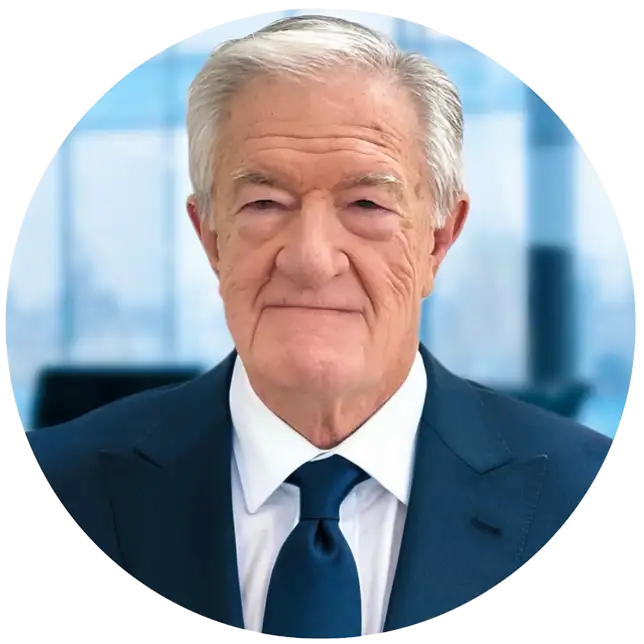Dear Friends,
Silicon Valley and the venture capitalists who built it were the first to welcome “disruptors.” It now seems society more broadly has grown to embrace them. Different from innovators or trailblazers, disruptors aren’t too worried about breaking things. They’re fast, nimble, and action-oriented. They’re not afraid to be wrong. When I look around the world today, I see more disruptors than ever before. Be they heads of state bucking established norms, social media-fueled youth movements forcing political change, or bad actors undermining elections, disruptors are everywhere. With an underwhelming UN General Assembly now behind us and the US federal government trapped in a shutdown, I’m struck by just how much our ways of governing seem to have evolved. Disruptors are now leading the charge, not the staid and principled institutions of yesteryear. How will societies adapt? And what can we do to keep disruptors in check? I spoke about it on this week’s 3+1 podcast, but I’d certainly welcome your thoughts. Drop me a line!
Kind Regards,
Jack Devine
CIA Spymaster & Chairman, TAG Intel
Emerging World (Dis)Order
Youth movements are everywhere these days—from Peru to Nepal to Madagascar to Morocco—challenging entrenched elites and testing political systems. Raised on social media, “Generation Z” is emerging as a force reshaping global politics by using digital tools to turn frustration into mass mobilization.
In Peru this week, youth groups continued to clash with police on the streets, resulting in at least 19 deaths. Directing their anger at President Dina Boluarte and the conservative-majority Congress, their voices railed against corruption, rising crime, and new pension laws. They made their point on Lima’s streets while the world watched on social media feeds.
Similar movements are erupting across the globe, turning simmering anger into action. Nepal’s youth protests last month, triggered by corruption scandals and fueled by anger over inequality, boiled over after the government banned social media platforms. The protests escalated into violent clashes that left dozens dead and forced the prime minister’s resignation.
At the UN last week, Nepal’s ambassador framed the uprising as both a tragedy and a sign of democratic renewal, calling youth demands for transparency and opportunity “aspirations for nothing less than a fair, just, and prosperous Nepal.”
In Morocco, the loosely formed youth collective “GenZ212” has mobilized thousands online using TikTok, Instagram, and Discord. They’re demanding better healthcare and education and criticizing government spending on international sporting events like the 2030 World Cup, set to be partially hosted in Morocco.
While fragmented and often volatile, these movements are united by a sense of generational injustice and cross-border solidarity. Powered by social media, they can gain momentum and membership in mere hours, giving the movements speed and reach unmatched by past uprisings. But their leaderless nature is a double-edged sword: the decentralization protects against government crackdowns but risks struggling to translate a movement’s outrage into reform. For governments and investors alike, the uptick in these digitally coordinated protests is a growing concern, especially in already fragile states.
Middle East in Flux
As Arab leaders were finalizing their talking points for last week’s UN General Assembly, US officials were discreetly engaging Arab governments to finalize Washington’s latest proposal to end Israel’s war in Gaza.
The 20-point peace plan, released Monday, comes at a time when pressure is building on Israel to conclude the war. At the UN, Arab leaders suggested the conflict had reached a tipping point while several other countries opted to recognize statehood for Palestine.
Israeli Prime Minister Netanyahu accepted the deal in principle. He’s keen to see Hamas disarmed and insistent that the group has no future role in governance in the territory. Netanyahu’s allies on the right are more circumspect, eager to push ahead with annexing Gaza, which this latest proposal expressly prohibits.
In recent months, Netanyahu has taken decisions that had the potential to seriously strain his relationship with Washington and threaten already fragile cooperation with Arab neighbors. So, his accepting the proposal is a positive sign. My hope now is that Arab leaders—especially Qatar and Egypt, which have endorsed the plan—can sufficiently pressure Hamas towards accepting the deal.
Netanyahu is understandably framing the peace plan as a victory that would see the hostages freed and long-term Israeli security objectives met. For Hamas, the plan details an eventual “…credible pathway to Palestinian self-determination and statehood…” which should surely appeal to Palestinian negotiators. Netanyahu has downplayed this language and assured right-wing members of his coalition that Israel has not agreed to a Palestinian state.
As with prior Gaza peace proposals, there’s still a chance this one falls apart. While all sides might agree in principle to the deal’s terms, how, exactly, the plan is implemented and adhered to will matter most. Any perceived violations, real or not, could see either side move quickly back onto war-footing.
Resource Security, Tech, and Competition
Global energy strategies are diverging as Washington is planning to revive its coal industry while China is angling to move away from fossil fuels—and to capitalize on its green energy offerings and guarantee its energy security in the process.
Over the past 20 years, coal has significantly declined as an energy source in the United States, replaced by natural gas, wind, and solar options. But now the Trump administration—which has expressed doubt regarding the reliability of green energy sources—aims to open 13 million acres for mining, invest $625 million to extend coal plants, and roll back emissions restrictions.
While China still depends on coal to power up its industries too, it’s instead looking for a fossil-fuels offramp. In the process, China has become the top builder of clean energy industries worldwide and is increasingly expanding its technological lead. At the UN General Assembly last week, Chinese President Xi pledged to cut emissions by 7–10% by 2035 and raise non-fossil fuel energy production to above 30%. Combined with falling costs, this positions China to capitalize on the world’s growing appetite for cleaner and cheaper power, and pressures other major polluters to follow suit.
China’s foreign investments are also driving down prices and making renewables cheaper than coal, oil, and gas in many countries.
In a major green powerplay, since 2023, Chinese companies have announced $168 billion in overseas clean energy projects — for example, investing $54 billion in Indonesia state utility PLN’s rapidly expanding renewables and EV projects. But while China’s investments and soft power efforts might have green externalities, these strategic sales are driven less by climate considerations than in a strong desire to increase the nation’s own security stature by reducing dependence on foreign oil. In that respect, it’s not so different from what the Trump administration is doing with coal, where he aims to shore-up the domestic energy market.
Indeed, while energy independence is a valiant and critical national ambition, the longer-term outlook for coal still strikes me as much darker.
Weekly Wildcard
In a vote clouded by cyberattacks, bomb threats, and allegations of foreign interference, Moldova has fortunately once again chosen a pro-European path. Sunday’s parliamentary elections delivered a decisive victory to the ruling Party of Action and Solidarity (PAS), reaffirming the country’s desire to distance itself from Moscow and deepen its ties with the European Union (EU). President Maia Sandu, who founded PAS and has made EU integration the centerpiece of her agenda, framed the election as nothing less than a test of Moldova’s sovereignty.
The pro-Russian Patriotic Electoral Bloc secured around 24% of the vote—enough to remain a visible force, but far short of challenging PAS’s parliamentary majority. The campaign unfolded under intense pressure, with electoral authorities contending with suspected vote-buying operations, cyberattacks on state infrastructure, and coordinated efforts to incite post-election unrest. Moldovan officials have pointed the finger squarely at the Kremlin, and I suspect they’re right.
Moscow denies involvement, but the tactics are familiar. Russia has been accused of meddling in elections across the region—in Romania, Georgia, Slovakia, and beyond—deploying the same hybrid playbook of disinformation, economic leverage, and destabilization to skew results in favor of friendly candidates.
This tug of war in Chisinau has only grown more consequential in the shadow of the war in Ukraine. For the Kremlin, a friendly Moldovan government could have paved the way for the deployment of Russian troops in the breakaway region of Transnistria—placing a new military threat on Ukraine’s western flank and forcing Kyiv to divert resources away from the eastern front. Indeed, despite its small size, Moldova has taken on unprecedented geopolitical importance.
Yet even with a pro-European majority secured, Moldova’s trajectory is fragile. The country remains one of the poorest in Europe, with poverty rates climbing above 33% and high inflation continuing to undermine household budgets. Many Moldovans—especially the young—are growing wary of slow reforms, rising inequality, and vague promises from Brussels. If living conditions don’t improve, public patience with the pro-European project could wear thin, opening the door once again to populist or pro-Russian alternatives.




